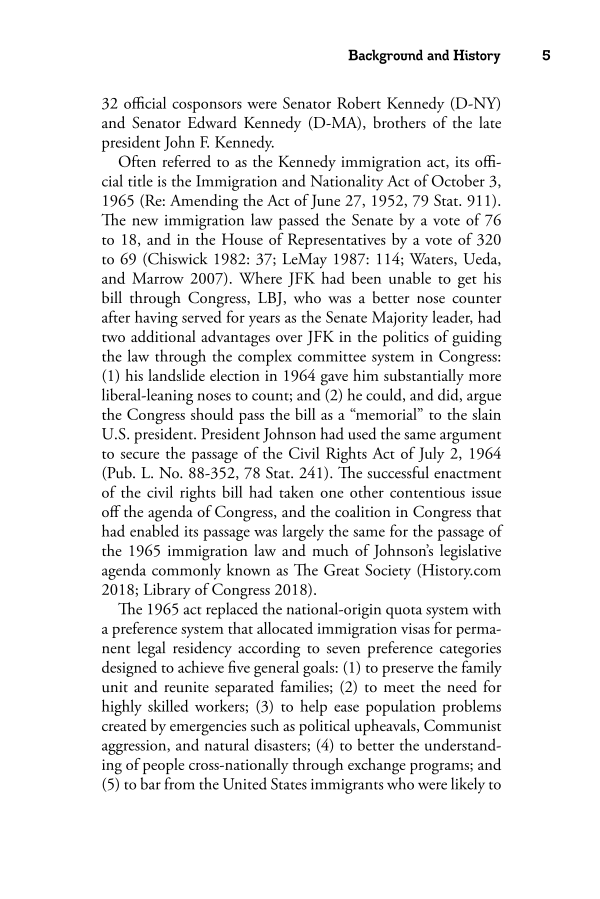Background and History 5 32 offi cial cosponsors were Senator Robert Kennedy (D-NY) and Senator Edward Kennedy (D-MA), brothers of the late president John F. Kennedy. Often referred to as the Kennedy immigration act, its offi - cial title is the Immigration and Nationality Act of October 3, 1965 (Re: Amending the Act of June 27, 1952, 79 Stat. 911). Th e new immigration law passed the Senate by a vote of 76 to 18, and in the House of Representatives by a vote of 320 to 69 (Chiswick 1982: 37 LeMay 1987: 114 Waters, Ueda, and Marrow 2007). Where JFK had been unable to get his bill through Congress, LBJ, who was a better nose counter after having served for years as the Senate Majority leader, had two additional advantages over JFK in the politics of guiding the law through the complex committee system in Congress: (1) his landslide election in 1964 gave him substantially more liberal-leaning noses to count and (2) he could, and did, argue the Congress should pass the bill as a “memorial” to the slain U.S. president. President Johnson had used the same argument to secure the passage of the Civil Rights Act of July 2, 1964 (Pub. L. No. 88-352, 78 Stat. 241). Th e successful enactment of the civil rights bill had taken one other contentious issue off the agenda of Congress, and the coalition in Congress that had enabled its passage was largely the same for the passage of the 1965 immigration law and much of Johnson’s legislative agenda commonly known as Th e Great Society (History.com 2018 Library of Congress 2018). Th e 1965 act replaced the national-origin quota system with a preference system that allocated immigration visas for perma- nent legal residency according to seven preference categories designed to achieve fi ve general goals: (1) to preserve the family unit and reunite separated families (2) to meet the need for highly skilled workers (3) to help ease population problems created by emergencies such as political upheavals, Communist aggression, and natural disasters (4) to better the understand- ing of people cross-nationally through exchange programs and (5) to bar from the United States immigrants who were likely to
Document Details My Account Print multiple pages
Print
You have printed 0 times in the last 24 hours.
Your print count will reset on at .
You may print 0 more time(s) before then.
You may print a maximum of 0 pages at a time.























































































































































































































































































































































































